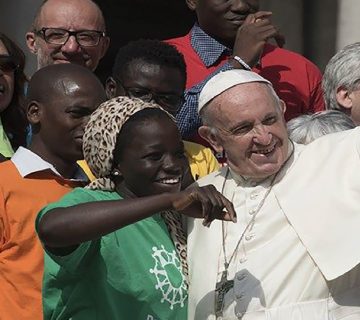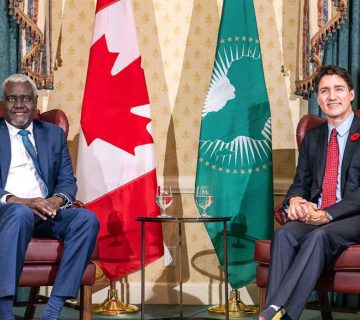The more than 120 armed militant groups and at least three violent extremist groups that are active in the greater Horn of Africa region convulse it with violence regularly, in pursuit of their goals. It does not help that, overall, the institutions that can create and sustain peace here are either weak or non-existent, and resource constraints are commonplace. Thus, the complementarity of peacekeeping and security efforts of states in the region cannot be second-guessed. Currently, half of the United Nations’ (UNs’) 12 active peacekeeping missions globally are based in Africa. Four of the African-based ones are in the region – in the Democratic Republic of Congo (DRC), Central African Republic (CAR), South Sudan, and Abyei (between Sudan and South Sudan). There is also African Union Transitional Mission in Somalia (formerly the AU Mission in Somalia [AMISOM]). Cumulatively, there are more than 67,000 uniformed mission personnel in the region. Still, violence persists because governments pay a high but incomplete price for peace, and, as UN Secretary-General, António Guterres, has observed, “Peacekeeping … is not enough to meet the challenges we face.” While peacekeepers help to prevent war, they cannot engineer the societal integration that anchors sustainable development and improves security outcomes in the countries of their deployment. For this, governments in the region need to proactively minimize security threats, improve their economies, and eliminate structural and socio-cultural impediments to lasting peace (such as social exclusion, weak state institutions, high youth unemployment rates, and multidimensional poverty).
Security Challenges
With the exception of ATMIS, all the aforementioned missions have been in operation for at least seven years, and have had their mandates renewed severally. Prolonged presence of foreign troop elicits reactions that range from anger to relief. For some, foreign troops, regardless of their stripes, are intolerable ‘occupier forces.’ The occupier narrative has motivated incursions into peacekeepers’ bases such as the May 4, 2022, terror attack on Burundian troops at an ATMIS base in the Ceel Baraf area in Mogadishu (Somalia). At least 10 peacekeepers were reportedly killed. In 2021, 177 UN peacekeepers were reportedly killed in the line of duty. 129 such deaths were reported in 2020; 49 of them were nationals of this region. For others, such troops are much-needed ‘safety nets.’ In the case of civilians often caught up in crossfires of armed groups, for example, peacekeepers are security safety nets. Often, peacekeepers secure humanitarian corridors, allowing for the safe passage of humanitarian supplies such as food, and medicine. They also protect refugees and humanitarian workers in camps such as Oruchinga, Kyangwali (both Uganda), Kakuma, Dadaab (both in Kenya), and Kiziba (Rwanda). Individuals and groups who earn a living by supporting peacekeepers technically, logistically, and operationally consider peacekeepers as economic safety nets. There is also a third group of individuals that are either physically removed from active conflicts, or free from the economic or social burdens of the effects of war such as increased crime, and commodity prices. The presence or absence of such troops does not impact their lives in any significant way.
Whichever way, it is an open secret that for as long as conditions that threaten peace and security persist, the deployment of peacekeeping troops to the region will likely continue. In which case, the further extension of mandates of existing missions cannot be ruled out. Particularly if, “The population [in DRC] have told us, ‘Stay and be more present,’” as Jean-Lacroix, the UN Under-Secretary for Peace Operations, reportedly said in October 2021 of the impending extension of the mandate of the organization’s Stabilization Mission in the DRC (MONUSCO). Or to allow for unfulfilled mission goals to be achieved. Neither can the addition of such operations, and/or more uniformed personnel to existing ones. It will take concerted efforts on several fronts to transition states emerging from armed conflicts to peace sustainably, and reduce overreliance on peace keepers. This is an uphill but surmountable task.
Reducing Threats to Peace
As the 2021 Global Peace Index ranking of South Sudan, Somalia, DRC, and CAR among the world’s 10 least peaceful countries in the world – compared to those in the Index’s top 10 – suggests, lasting peace remains a mirage when existing structural and socio-cultural impediments to it are unaddressed. To begin with, governments in this volatile, fragile, and complex region need to concentrate on the community buy-in of uniformed personnel. This can be achieved through regular, government-led, nationwide campaigns to educate the masses on the role of peacekeepers in their territories; counter occupier narratives; and reduce unwarranted hostility toward peacekeepers.
The governments can also leverage existing missions by actively engaging peacekeepers in the course of current mandates to help establish or strengthen institutions that build and safeguard peace. These include functional judiciary systems, inclusive economic systems, and accessible educational institutions. This effort could be complemented by active support for other joint security initiatives to counter terrorism and insurgencies in the region such as the South African Development Community’s Regional Counter Terrorism Center that was launched on March 1, 2022, or the proposed East African Community’s anti-militia force (the East African Regional Force). To ensure continuity and stability once mission mandates expire and troops exit, the inclusion and active participation of host communities in this process should be non-negotiable.
Economic prosperity is positively associated with lasting peace; this is well documented. The more peaceful a state is, the higher the likelihood that its economy will flourish, as evidenced by the development indicators of the ‘Asian tigers,’ and the world’s most peaceful countries. The greater Horn of Africa region is well resourced with untapped natural resources (high-value metals, numerous water bodies, vast farmland), and a potential millions-strong demographic dividend, but the workforce is largely unskilled, and infrastructure (roads, manufacturing plants) generally underdeveloped. To achieve lasting peace, governments also need to prioritize the lifting of the approximately 70 million multidimensionally poor individuals in the region out of economic disempowerment. Bilaterally, or multilaterally, governments could mass-train all unskilled and employable workforce, and improve economic infrastructure (such as roads, internet connectivity, and manufacturing plants), depending on the development needs of target countries. Growing and inclusive economies will create a more stable and secure region.
Roselyne Omondi is the Associate Director, Research, at the HORN Institute
Photo: UN peacekeepers try on new uniforms in Zambia ahead of a deployment to the Central African Republic with MINUSCA in April 2015 (Photo Credit: Tsidoti/Wikimedia Commons)
The contents of this article are copyright of © The HORN Institute 2022. All rights reserved. Any redistribution or reproduction of part or all of the contents in any form and for whatever reason is prohibited. You may use the content of this article for personal reasons, but acknowledge the author and cite the website as sources of the material.



